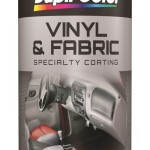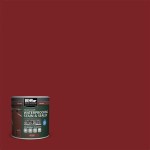How To Get Your Car Paint Color Code
Accurately identifying a vehicle's paint color code is essential for a variety of automotive maintenance and repair procedures. From touching up minor scratches to performing complete repaints, a precise color match ensures a seamless and professional-looking result. The paint color code acts as a specific identifier, removing ambiguity and guaranteeing the correct shade is used. This article will provide a comprehensive guide on locating a car's paint color code, covering the various common locations and methods employed by automotive manufacturers.
The importance of obtaining the correct paint color code cannot be overstated. Relying on visual matching or general descriptions can lead to significant discrepancies in color, resulting in an unsightly and potentially devaluing repair. A well-matched paint job maintains the vehicle's aesthetic appeal and preserves its resale value. Furthermore, using the correct color code ensures that the new paint adheres properly and provides the necessary protection against environmental elements.
Understanding the Paint Color Code System
Automotive paint color codes are typically alphanumeric sequences, a combination of letters and numbers, assigned by the vehicle manufacturer. These codes are standardized within the specific automotive brand but vary considerably between different manufacturers. There is no universal code format across the automotive industry. Therefore, understanding the specific manufacturer's coding system is vital. These codes often represent the specific pigment mixture and manufacturing process used to create the desired color. Understanding the breakdown of the code itself isn't always necessary to obtain the correct paint, but recognizing it's distinct format can help to identify it amongst other vehicle codes.
The paint code might appear in a variety of formats, such as a single letter (common in older models), a combination of letters and numbers (e.g., "WA8555," "202," "LX7W"), or even a more complex alphanumeric sequence. Some manufacturers also include a descriptive name alongside the code, but the code itself is the critical element for accurate matching. The descriptive name, however, can be helpful in confirming the correct color, especially when several similar shades exist.
It's also worth noting that some paints are multi-stage, involving a base coat and a clear coat. The paint color code typically refers to the base coat color. Clear coat application is a separate process and doesn't have its own distinct color code, it is a protective layer applied on top of the basecoat. Single-stage paints combine the color and clear coat into one application.
Common Locations for Finding the Paint Color Code
Automotive manufacturers strategically place the paint color code in various locations within the vehicle. The specific location varies depending on the make, model, and year of the car. However, some locations are more common than others. The following sections describe some of the most likely places to search. Always consult the vehicle's owner's manual first, as it often contains specific instructions on locating the paint code.
Driver's Side Door Jamb: This is one of the most frequently used locations. The paint code is typically found on a sticker or label placed on the door jamb, the area of the car body that the door closes against. This sticker often includes other vehicle information, such as the VIN (Vehicle Identification Number), tire pressure specifications, and manufacturing date. The paint code is usually clearly marked, often with the words "Color Code," "Paint Code," or simply "Color."
Inside the Engine Compartment: Another common location is inside the engine compartment, often on the firewall (the metal panel separating the engine from the passenger compartment) or on one of the inner fender panels. The paint code may be printed on a sticker or stamped directly onto the metal surface. Due to the engine's operating environment, these labels can sometimes become faded or damaged, making them difficult to read. Careful cleaning may be required to reveal the code.
Glove Compartment: Some manufacturers place the paint code sticker inside the glove compartment, either on the door itself or on the inner wall of the compartment. This is a less common location than the door jamb or engine compartment, but it's still worth checking. The sticker may be located in an easily visible position or tucked away in a corner.
Under the Hood: Specifically, along the radiator support. This is the metal bar running across the front of the engine bay. Often there will be a sticker with the color code and other important vehicle information. This is a less common location for newer cars.
Spare Tire Well: In some vehicles, the paint code sticker can be found in the spare tire well, located in the trunk. This location is less susceptible to environmental damage, so the sticker is often in good condition. You will need to remove the spare tire to access this area.
Owner's Manual: The vehicle's owner's manual is a valuable resource for locating the paint code. It often contains a diagram or description of the sticker's location. The manual may also provide additional information about the paint color, such as the manufacturer's name for the color.
It's crucial to systematically check each of these locations. Use a flashlight to illuminate dark areas and a magnifying glass if the print is small or faded. If the sticker is damaged or missing, alternative methods, such as contacting the manufacturer or using online resources, may be necessary.
Alternative Methods for Obtaining the Paint Color Code
If the paint code sticker is missing, damaged, or illegible, alternative methods can be used to obtain the correct color information. These methods typically involve providing the vehicle's VIN (Vehicle Identification Number) to a dealer or using online paint code databases. They are often reliable, but may require some effort and potentially a small fee.
Contacting a Dealership: The most reliable method, though it might require a visit or phone call, is to contact a dealership for the car's make. Providing the VIN to the parts department allows them to access the vehicle's manufacturing records and retrieve the original paint color code. This method ensures accuracy, as the information is directly from the manufacturer's database. Be prepared to provide proof of ownership when contacting the dealership.
Using Online Paint Code Databases: Several online databases specialize in providing paint color codes based on vehicle information. These databases often require the VIN, make, model, and year of the car to identify the correct color. While generally reliable, it's essential to cross-reference the information with other sources, such as color samples or images, to confirm the accuracy of the result. Some databases may require a subscription or a small fee for access.
Local Auto Body Shops: Auto body shops have experience with identifying paint colors and can often assist in determining the correct code. They may use specialized tools, such as color scanners, to analyze the existing paint and identify the closest match. This method may involve a fee, but it can be a viable option if other methods have failed. Furthermore, they can also use their database of paint codes to find the correct one based on the VIN number.
VIN Decoder Websites: Numerous VIN decoder websites exist online, allowing users to input a VIN and receive a variety of information about the vehicle, including the paint color code. These websites extract data from various sources, including manufacturer databases and public records. While convenient, it's crucial to verify the information obtained from these sites with other sources to ensure accuracy. The accuracy of VIN decoder websites may vary and it's always recommended to confirm this information with a dealership or the manufacturer's records.
Using a Paint Color Matching Tool: There exist specialized tools that use color spectrometry to attempt to identify the paint color of a car. These tools can be expensive but can be accurate if used correctly. This is typically a tool used by auto body shops and is not recommended for use by amateurs. It requires skill to properly use.
When using any of these alternative methods, providing accurate vehicle information is crucial. Double-check the VIN and verify the make, model, and year of the car to ensure the correct paint color code is retrieved. Cross-referencing the results from multiple sources will further increase the likelihood of obtaining an accurate match.
Beyond the paint color code itself, it’s also beneficial to note any specific paint codes for trim or accessories. Sometimes, bumpers or side-view mirrors are painted a different shade of the same color or a completely different color altogether. Getting the codes for all of the painted parts will ensure a consistent look and will make any needed repairs or touch-ups match perfectly.
In conclusion, tracking down your car’s paint color code can feel challenging, but by systematically checking the typical locations and using the alternative methods where necessary, you can obtain the correct code with confidence. Remember that accurately identifying the paint code is a critical step in ensuring a successful and aesthetically pleasing automotive repair or restoration project.
How To Find Your Car Color Code Match Paint By Vin
How Do I Find The Paint Code For My Car Part
How To Find Car Paint Code Locations On Most Cars
How To Find A Paint Code On Any Vehicle Fast All Models
How To Find Your Vehicle S Color Code For Touch Up Paint
How To Find Your Car Color Code Match Paint By Vin
How To Find Your Paint Code Partify
Understanding Car Paint Codes A Comprehensive Guide Touchupdirect
What Is My Paint Code By Vin Find And Choose The Perfect Car Color Stat Blog
How To Find The Color Code Of Vehicle
Related Posts








